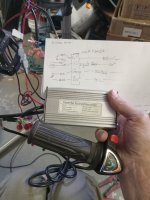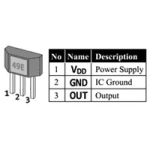DTBAKER61
1 mW
I have inherited an old 48v eBike that has seen better days.... and is not currently running.
1. battery was replaced not long ago, voltage test fine, so that's probably fine.
2. original display-throttle was crashed on several times and was highly suspect, so I've tossed that and bought an inexpensive twist grip throttle
3. I don't need PAS, fancy display or brake interlocks.... just twist-grip 4-wire throttle
4. I've wired up the new throttle, but bike is still not working.
Q: how can I tell what *should* be measured coming from the controller output (with *some* throttle) to make sure the controller is ok ?
I am attaching picture of controller/motor connector; 3-phase wires and 6 contacts around the outside
Q: I do have a variable voltage/current power supply.... can I jumper to hub motor connector to make sure hub motor is ok?
Q: if the hub motor is bad, can I keep the existing wheel, and buy 'just the guts' of the hub motor to keep repair cost down?
1. battery was replaced not long ago, voltage test fine, so that's probably fine.
2. original display-throttle was crashed on several times and was highly suspect, so I've tossed that and bought an inexpensive twist grip throttle
3. I don't need PAS, fancy display or brake interlocks.... just twist-grip 4-wire throttle
4. I've wired up the new throttle, but bike is still not working.
Q: how can I tell what *should* be measured coming from the controller output (with *some* throttle) to make sure the controller is ok ?
I am attaching picture of controller/motor connector; 3-phase wires and 6 contacts around the outside
Q: I do have a variable voltage/current power supply.... can I jumper to hub motor connector to make sure hub motor is ok?
Q: if the hub motor is bad, can I keep the existing wheel, and buy 'just the guts' of the hub motor to keep repair cost down?
Attachments
-
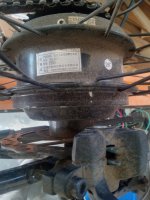 20230615_48v-26w-Hengtai-cn.com hub.jpg472.5 KB · Views: 0
20230615_48v-26w-Hengtai-cn.com hub.jpg472.5 KB · Views: 0 -
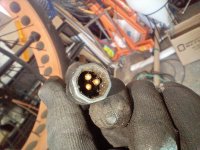 20230615_motor connector.jpg357.4 KB · Views: 2
20230615_motor connector.jpg357.4 KB · Views: 2 -
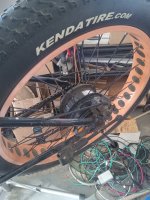 20230615_rear wheel hub motor.jpg550.1 KB · Views: 2
20230615_rear wheel hub motor.jpg550.1 KB · Views: 2 -
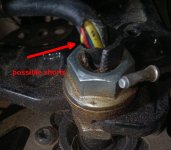 20230615_suspect axle short 3.jpg148.6 KB · Views: 3
20230615_suspect axle short 3.jpg148.6 KB · Views: 3 -
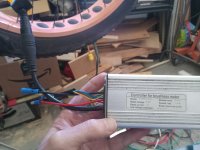 20230617_48v brushless 4-wire controller.jpg182.1 KB · Views: 2
20230617_48v brushless 4-wire controller.jpg182.1 KB · Views: 2 -
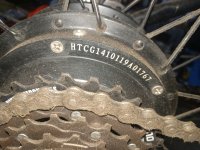 20230617_48v hub motor number.jpg364 KB · Views: 1
20230617_48v hub motor number.jpg364 KB · Views: 1


